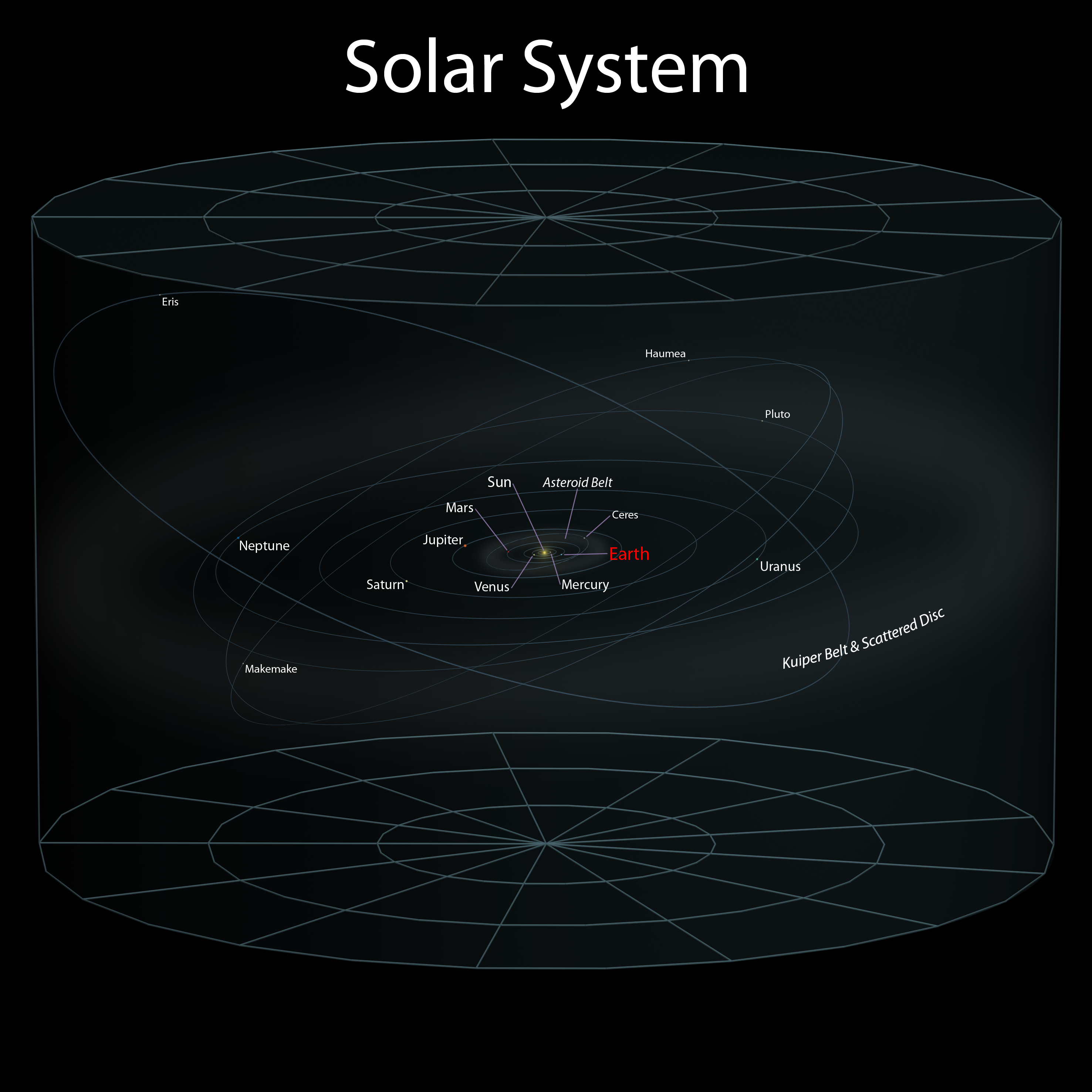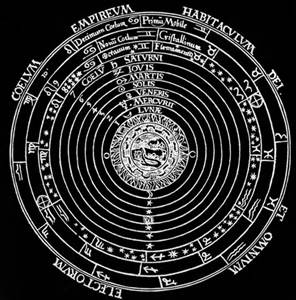
Once in awhile even I get tired of religion bashing. Although it deserves the drubbing many of us are giving it, I enjoy the “just good stuff” science I get to share on this blog every bit as much as the continual critique of our worst cultural habit.
So in that spirit check out the incredible 7 mile wide model of the Solar System two young filmmakers put together in the Nevada desert and documented in the video below:
It is breathtaking in providing you a perspective on our tiny little (yet enormous, 2 light years across) corner of the galaxy, much less the universe and its a damn well made film of their momentous and exceptionally clever effort to make the model right. You can read a short summary of the model’s construction HERE.
Starting with a little blue marble to represent the earth the article explains:
“From there, the team placed the planets at their relative distance from the sun, and traced each planet’s orbit around the sun in a dry lakebed using their cars. They hooked the planets up to lights, and at night they went to the top of a nearby mountain to capture video of the lit planets as they completed their orbits.”
The video really does it justice. And that’s merely the “making of” video. The final solar system model film should be a winner when released.
What we can do with modern technology: GPS, a drone, digital film equipment, computer animation and that element which makes it all happen – Human drive and ingenuity!
My short foray into academic research, into my passion of investigating Human Cognitive Evolution, led me to consider more than my main research questions such as when did we evolve: 1.the visuospatial skills to observe and model the world such as how the heavens go, 2. when and how did we develop the manipulative skills to build the elaborate tools we take for granted as a natural part of our daily life which now include the elegant technology you see employed in the making of this solar system model, and 3. the conceptual abilities that allow us to model and theorize spatial relationships and processes in time, but of paramount importance, 4. the drive, the motivation, the burning desire to know, to figure things out just for the sake of understanding, seeing it in front of you knowing you have unlocked another secret of how the universe works. When did that happen? When did we want it so bad? Without that drive their would be no science.
The first tool-makers of close to 3 million years ago show no evidence of having it, they made the very expedient tools in the upper left corner of the box and not much else if anything for a million years.

Then our ancestors made the simple handaxe at the bottom left (and not much else) for another 1.5 million years. But in the last few 100,00 years of our existence and just prior to the cultural explosion that took off after 40,000 years, we imposed symmetry on our tools, represented in the 4 fine handaxes in the center and right side of the box.
Until you grok symmetry, there’s no way you could model the solar system, or anything else for that matter. You couldn’t see the regularities in the movements of the stars and especially the planets above you. You couldn’t produce the equal spacing in the model’s concentric rings which represent a gods eye view of the solar system, which no human (and no god) has ever seen.

Think about it, it is just a model. No one could ever visually observe this view. But we can see reality with our concepts and theories and from what we can observe and/or measure.
We take that “simple” skill for granted as mere childspllay: to see and represent equal spaces and elements and produce symmetry. Once we came to know it, as evidenced first in those tools, it wasn’t all that long comparatively speaking to the great lengths of prior human history that we made the exquisite cave art of Southern Ice Age Europe and a plethora of manufactured objects; harpoons, flutes, figurines, needles and spears.



You can’t make much of anything without the ability to recognize, visualize and impose symmetry on a manufactured object. Those fine handaxes, the bone flute and harpoons above and yes, the solar system model all depend on our unique conceptual ability to see and do symmetry. Ya need it to make music and , dance. Equal intervals of pitch and rhythm, ‘taint no music without it:

Music, modeling the solar system, its all the same.
These are the things we can do when not doing religion.


Symmetry and the Music of the Spheres.
(662)

The quote…To Science…etc is an inscription on the rim of the dome of The National Acadamy of Science in the U.S. I thought it was inspirational and have copied it for future reference.
“To science, pilot of industry, conqueror of disease, multiplier of crops, explorer of the universe,revealer of natures laws, eternal guide to truth. “
wow great quote
Fantastic isn’t it?
yeah, they did a great job. Close to my heart as I have done a solar system “walk” on campus that goes about 1/2 mile. We use a peppercorn for earth and Mars and a bowling ball for the sun with a walnut for Jupiter. The inner planets are all within like 10 paces of each other and the “Sun” but then you walk a 1/2 block off to Jupiter and further to Saturn, and 1-2 blocks to get to each of Neptune, Uranus and not-planet Pluto. You’re so far away you cant see all the way back to the sun, not even with binoculars. You get a real perspective on how tiny the planets are compared to the distances between them. Its ridiculous. But thats nothing compared to interstellar distances. The edge of the solar system where the suns gravity finally falls off is by this model 2,000 miles away. So if you did the solar system at this scale covering 1/2 mile in Sydney, the edge of the solar system might be Shark Bay? Scary aint it? The nearest star is another 2,000 miles away…and thats one star in the 100 billion stars in our galaxy, one of 100 billion galaxies in the observable universe.
And…the WALK sounds fantastic. I’ve never heard of such a thing but I’m very impressed.